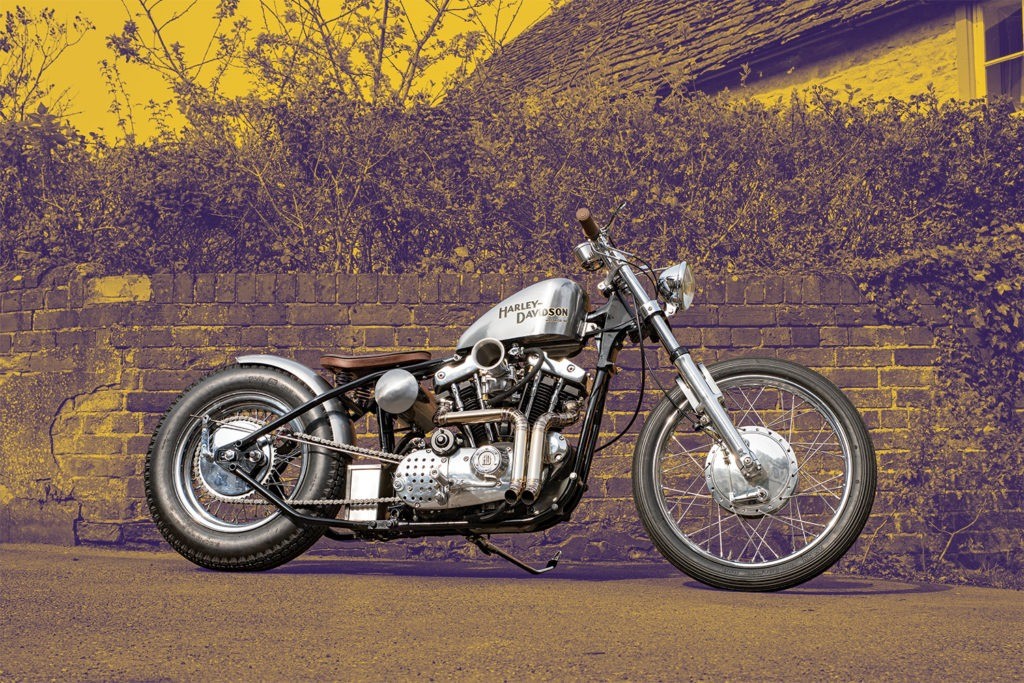
From a Harley-hater to Harley-lover, Trevor Jones transforms his Ironhead
Words by Kali Kotoski
Photos by Del Hickey
The rites and rituals before taking the baptismal plunge into Harleydom are often deeply personal and rooted in history. But for the UK’s Trevor Jones it started as being on an island of one, absent any knowledge about the canonical prophets like Shovelhead, Ironhead, Panhead and Knucklehead.
“Basically, I learned everything as I progressed with the build,” he explained to Thunder Press, “as I started off with zero knowledge of Harley-Davidsons. I didn’t even know that I had bought an Ironhead…only found out after that all their engines had a name!”
A bricklayer by trade, Jones is a self-described perfectionist and has used his talents wrenching, modifying and riding countless numbers of Japanese bikes for over 40 years, but never a Harley, let alone one from the late 1970s. Sure, he’d been around the proverbial block, having owned and raced plenty of ‘common’ bikes like a Yamaha FS1E and RD250, Honda CBX six-cylinder and a Kawasaki Z650, all while spending track days on Yamaha’s R1, R6 and a Suzuki GSX-R750. Some of his Japanese creations even found themselves in magazines like Superbike and Streetfighters.
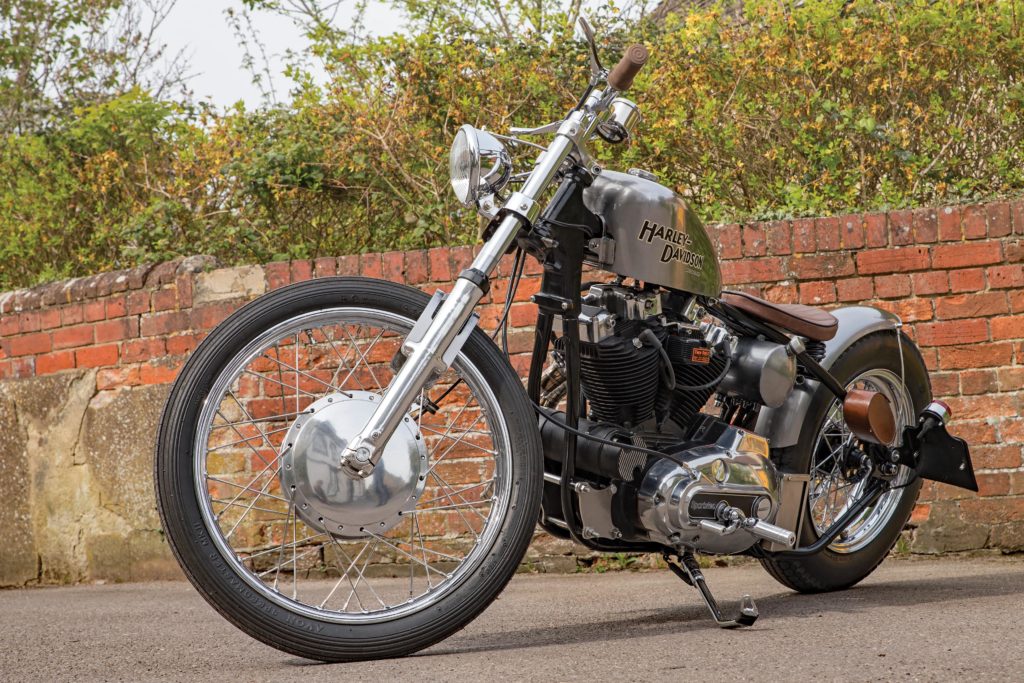
So when he decided to undertake his Ironhead build, he turned to Harley-Davidson forums and the proselytizers on YouTube. Luckily, Harleydom is very forgiving of previous misdeeds, especially when one is on that a-man-of-refined-tastes path to a left-handed marriage with American muscle.
One particularly memorable time, Jones had to remove the cam cover and naively let a couple of gears fall out. “After a bit of cursing and punching myself in the face,” he said with a laugh, “I found a video on YouTube and replaced the gears correctly and even made sure the timing was spot on. I ended up doing a lot of work on the engine and am pretty confident I could strip and rebuild it.”
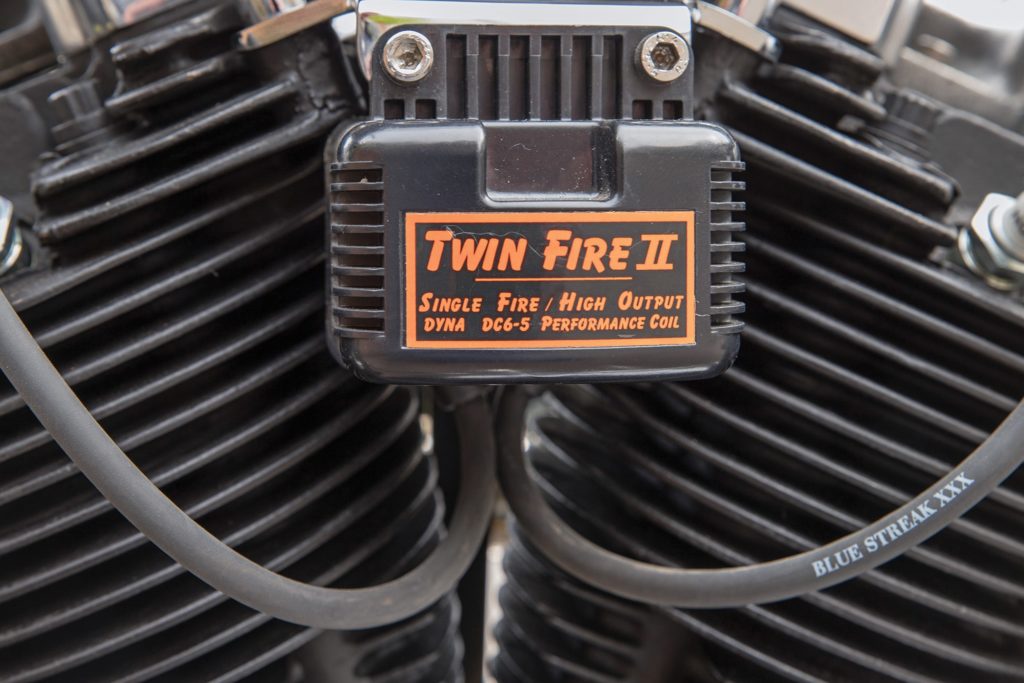
That is just one of the many trials and tribulations Jones faced, with the most obvious challenge being that he had to ditch his metric tools and adopt American standards, a frustrating plight we are sure you all have encountered over years of tinkering.
But not only was he supremely naïve when buying a bike that had an engine named Ironhead, he was also dealt a lemon.
“The guy who sold me the engine allegedly took it from a running bike. That turned out to be a lie and I ended up virtually rebuilding it with lots of new parts… We live and learn,” Jones explained, adding that he still hasn’t forgiven the snake conman, who we have declined to name.
The original inspiration for the build was to make it a chopper with forward controls. But that singular vision was blown out of the water as he continued to research design aesthetics and embraced the limitless creativity of Harleydom.
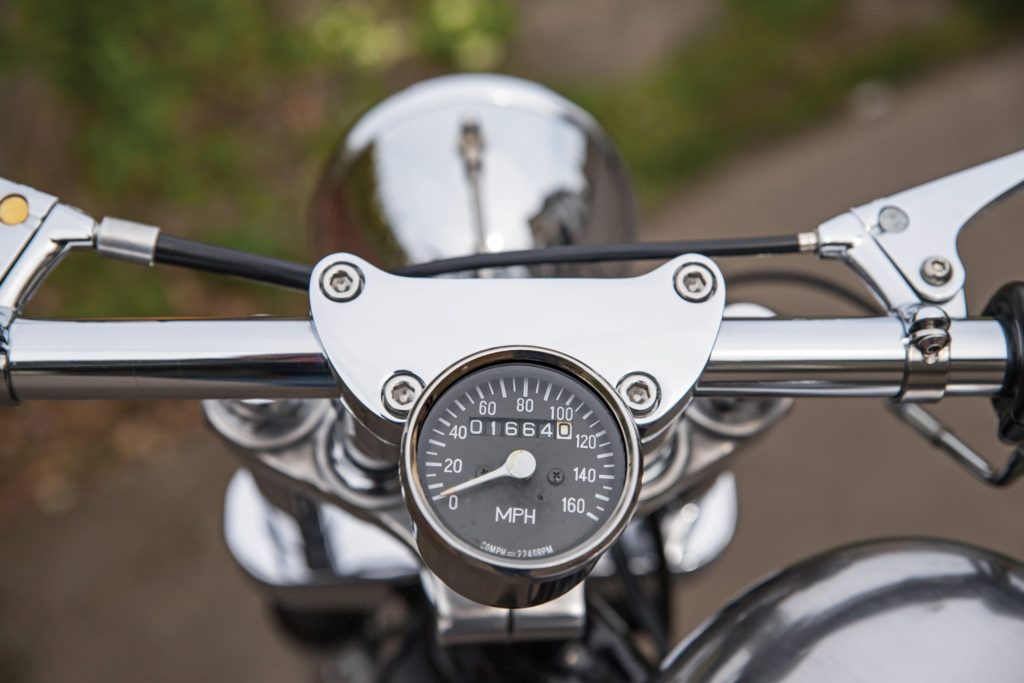

“My wife often reminds me that I have spent the last 40-odd years ripping into Harleys, saying they were one chromosome away from being tractors. So in a weird way I was the ideal person to build one,” he said. “I wanted to build something old but also that looked even older. Something that to the layman might even be a restored bike from the ’50s.”
He chose to install drum brakes because they “simply look so good,” despite the fact that their braking power requires extra concentration and thinking further ahead.
“I grew up on drum brakes so I am used to them, and it makes for a more interesting ride,” Jones said. “Heart-stopping moments occur quite regularly, as I do ride fast and hard.”
As the build progressed over a total of 15 months, Jones was often admonished on forums that he would never get it to run properly with his S&S carburetor kit combined with a velocity stack.
“I must have been lucky as I bought the carb off eBay (used) and just bolted it on with a plan of tuning it once the bike was running. When the big moment came, it fired up and was almost perfect!” he explained.


Being a professional in the construction industry, Jones is obsessed with correct lines and aesthetics, so he let his instincts take over, going to great lengths to get the bike right. Even to the point of agonizing over small details like the height of the risers, the line from the rear wheel spindle up the frame and along the top of the gas tank to strike exactly where the handlebars sit.
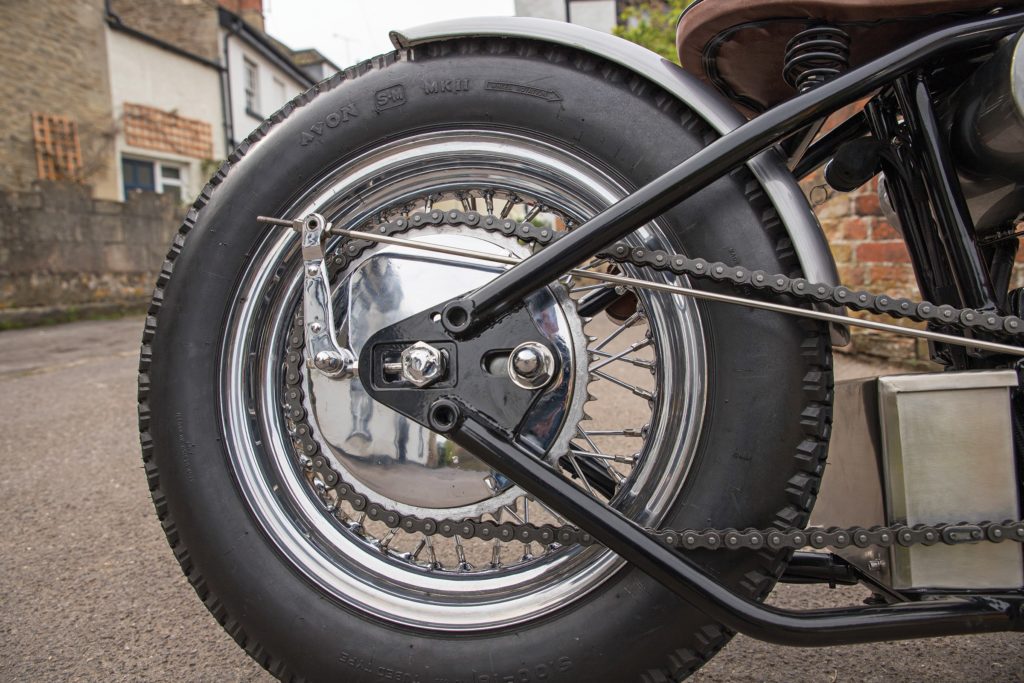

But the build wasn’t always easy, of course.
“More than once I considered dowsing it in petrol and burning it,” he said.
Having now ridden the creation over the last season, Jones says spectators seem to like it, even some of those non-bike riding ‘others’ and bikers that are not into Harleys.
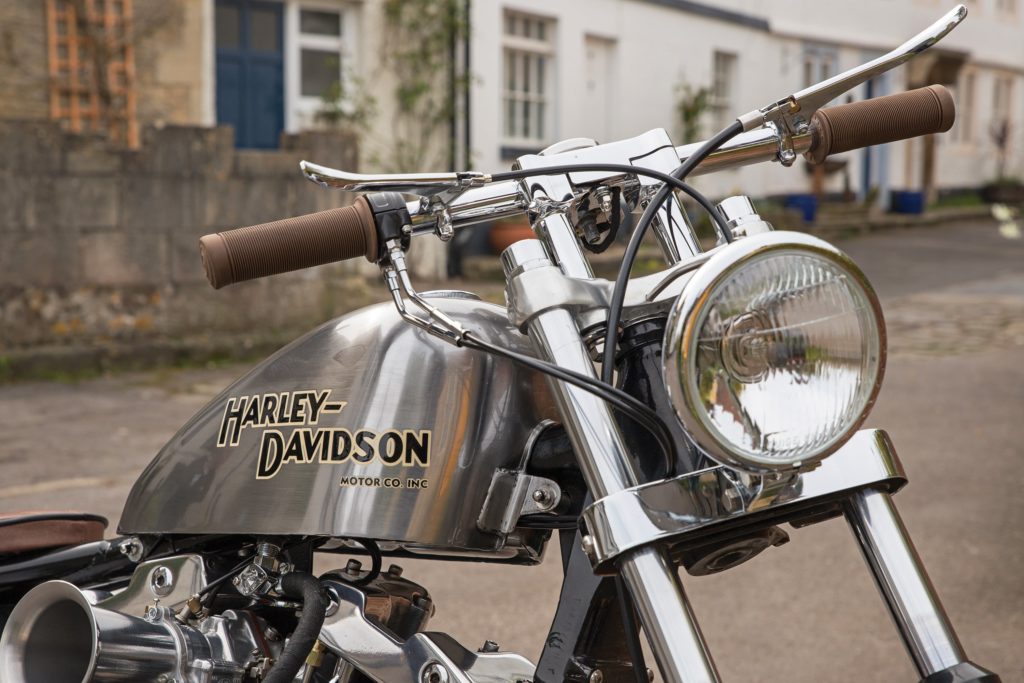


“People stop and ask questions and take photos of it. I wanted it to look even more vintage than it is and I think I’ve achieved that,” he said.
While Jones isn’t one to shy away from well-deserved show-bike praise, the thrill of the build is firmly planted in how fun it is ride, something he never experienced truly in his previous life wedded to Japanese motorcycles, no matter the ridiculous speeds they can achieve.
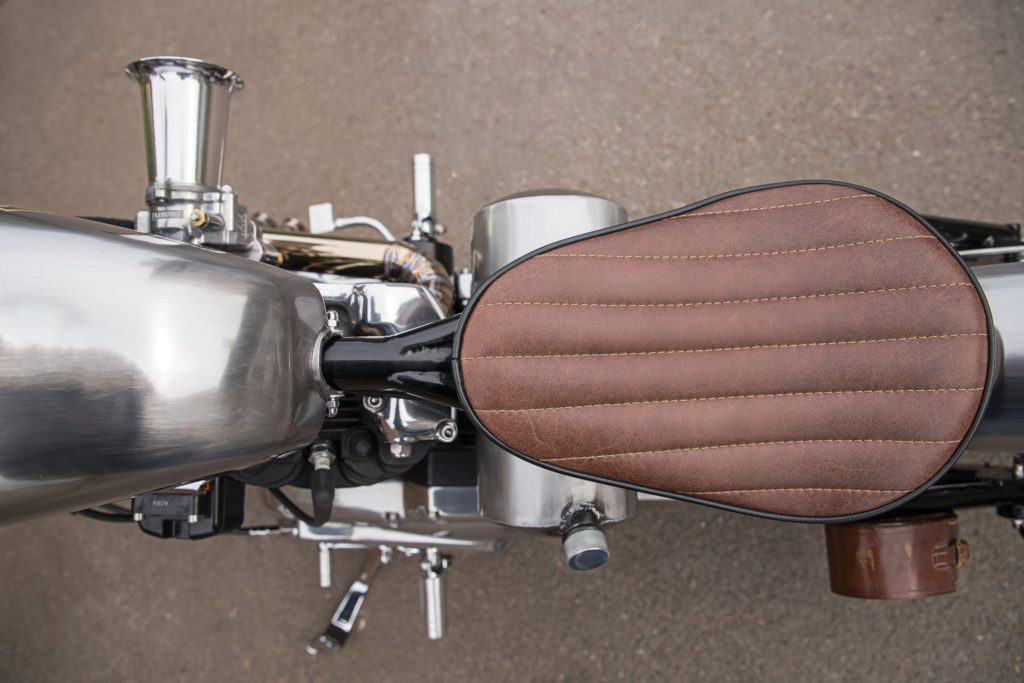
According to Jones, it handles much better than expected and reminds him slightly of the Z650s he raced as a lad, which ran “lumpy” at low speeds “but all hell breaks loose when opened up.” It is also his favorite bike he has ever built and ridden, making him a true Harley brethren.
“It is definitely not a bike for the faint-hearted. It growls and snarls, tries to throw me off if I hit a bump when hard into a bend, pulls like a freight train and has power delivery to make anyone grin like a lunatic! It is so much fun it should be illegal.”




















